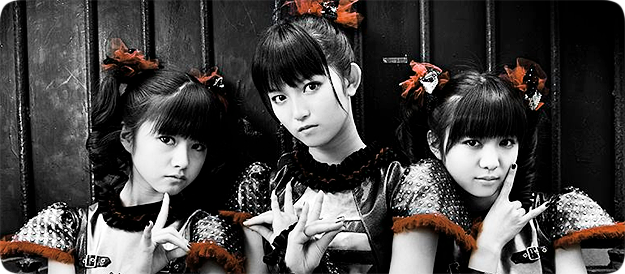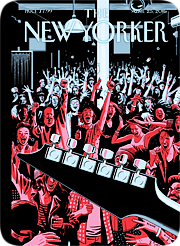
It’s been another long month of uncertainty, stay-at-home orders, and streaming concert videos, the last a somewhat soothing balm to ease the blow of a virus that has wiped out any sense of security basically everywhere except South Korean, and not getting that Lady Gaga album that might have made it all just a little easier to deal with. Predictably, the music industries around the world scaled back and postponed in anticipation of more lucrative times, and we were left with a fraction of the music that would normally be rolled out to start heralding the great Song of the Summer Battle. But it hasn’t been a total blank and we did get some interesting releases in a variety of genres — here are a few that stood out.
 (G)I-DLE: I Trust
(G)I-DLE: I Trust
(2020.04.06)
Up until now, (G)I-DLE has been the group to go to for straight-up tough-girl bangers like “Maze” and “Latata.” Their follow-up EP, I Made, paved no inroads, delivering more of the same generic, tropical-house that has been clogging K-pop the past few years. Luckily, the group has done a minor overhaul with I Trust, taking the moody lust of last year’s one-off “Lion,” and creating a whole EP around a sound less focused on getting bodies out of seats, than taking people outside of their bodies altogether. “Oh my god,” the lead track off of I Trust, is something of a red herring, not as cerebral as it wants to be, but certainly more dramatic, shifting the tempo abruptly into neutral just as soon as it seems to be taking off. These moments that give pause are scattered throughout this more somber side of (G)I-DLE. While the collection does rely a bit too heavily on trendy trap-hooks that set a very short expiration date on its longevity, it’s a nice, new color for the group, the more serious right of passage on any girl-group’s mood ring. (G)I-DLE wear it well, as I expect they would a big summer bop and winter ballad, too.
 Anly: Sweet Cruisin’
Anly: Sweet Cruisin’
(2020.04.08)
It would seem like the Anlys of the world are a dime a dozen now, so ubiquitous you can’t click a Related Artists link on Spotify without being bombarded by the same ten or so indie-bent singer-songwriters signed to major labels. Okinawa-born Anly’s origin story isn’t unique: the Millennial fairy tale-template is strong in this artist who grew up listening to her father’s music collection and began releasing and playing her own songs straight out of high school, gaining traction with modern gimmicks like iPhone-filmed music videos, pushing the “genre-less” party line, and boasting large streaming numbers. She was signed to a major on the promise of just two singles. But the music holds up well, though I’m not sure if “genre-less” is the correct term for Sweet Cruisin’, so much as “indecisive,” the kind of record that careens between swinging acoustic-prominent J-pop jams like “We’ll Never Die” and “Sunshine,” and mellow hip-hop like “Sleep” in an attempt to distinguish itself from more over-produced outfits by purposely maintaining a bit of a rough, DIY aesthetic that offers the illusion of authenticity, a sound now as marketable as any idol’s. There’s an audience for this kind of music, and while I might not be it, I can appreciate what Anly is doing within the confines of the box she’s built herself into.
 Spell: Opulent Decay
Spell: Opulent Decay
(2020.04.10)
A minor avalanche of great metal albums have been release throughout April, so it’s a real shame that I just haven’t been in the mood to listen to and enjoy them as much as I normally would. I don’t have any explanation for this, aside from the inability to give the genre the concentration and consideration it deserves lately. Aside from Dawn of Solace’s Waves and Stallion’s Slaves of Time, Spell’s Opulent Decay is the first metal album I’ve enjoyed since 2020 kicked off, and even now I’m at a loss to articulate what distinguishes it from other albums in its sub-genre. The album is steeped in early 80’s hard rock, with its immediate influences being groups like Black Sabbath and Blue Oyster Cult, though I hear a lot of debut-era Ghost in these songs, too (themselves drawing from the same wells in their first years). It’s full of decent hooks covered in a tell-tale funereal gloom, and guided first by the dominant guitar work and then the thin, somewhat incongruous vocals. But it all works, even when nothing feels particularly original, and while I’m under no impression this will be making many year-end lists, I have found it a treat to chew on this past week, a kind of aperitif that I hope will stimulate my appetite for more in the coming months.
 Nanaka Suwa: So Sweet Dolce
Nanaka Suwa: So Sweet Dolce
(2020.04.15)
If you’re a young seiyuu looking to make the transition to solo idol star, the history of the genre has ensured there are plenty of models available to emulate. Nanaka Suwa seems to be pulling from a variety of sources, among them veterans like Luna Haruna and Aya Uchida, but especially Ayami Muto and Yui Ogura. The latter is proving a particular inspiration, not just in visuals, but in sound. Suwa’s debut album So Sweet Dolce is something of a concept album, with each song focused around exactly what its titles suggest: sweets. With titles like “Donut Ring World,” “CHOCOLATE PHRASE,” “MACAROON LOVE,” and “POPCORN no Kumo (Popcorn Cloud),” the album goes all in, though the lyrical content and music itself isn’t anything different than so much upbeat idol-pop before it. While the album trades in a sound as expendable and nutritionally deficient as its thematic content, I’d argue that its sincerity and commitment give it some lee-way: junk food never promises anything more than a pleasing and evanescent mouth-feel and delicious sugar rush, followed by a crash that leaves the consumer lethargic and unsatisfied. On that front, this album comes fresh out of Wonka’s factory, perhaps all the better to keep it so short and so sweet. Suwa doesn’t bring anything new to this genre that you can’t already get from someone like Ogura, but for those who can’t get enough of this sound, and the endless parade of pretty women in crinoline who represent it, then as the title track says, prepare for some “uncontrollable crush vibes.”
 Who-ya extended: wyxt.
Who-ya extended: wyxt.
(2020.04.15)
Anime tie-ins won’t be the first or the last time I will see Who-ya on my radar if they keep this up: sampled at random, the debut album wyxt. took me a bit by surprise. Not much is known about Who-ya except that it features the voice of a gifted 20-something who hits all the right dramatic heights for the type of guitar-driven themes common in shounen. The album also incorporates just enough synths to keep things clipping at a very nice, quasi post-hardcore pace. I listened to this one around the same time as the new miyavi album, so while I’m bound to draw some comparisons, this album has a lot more studio spit-and-polish than the latter’s just plain polish, incorporating more bells and whistles like on “REC ON,” where some dubstep-lite makes an unfortunate appearance, or on “G.O.A.T” where all the hooks are electronic. It’s a true hybrid of an album, fusing rock, balladry, and electro in a way that shows modest promise.

 CHUNG HA: “Stay Tonight”
CHUNG HA: “Stay Tonight”
(2020.04.27)
I have been waiting all year for K-pop to wake up, to give me the first glimpse of a genuine heart-pounding, intergalactic, stars-collide hit. I really did not expect that hit to come from CHUNG HA, who until now, has released some pretty good dance-adjacent solo songs after a stint in short-lived girl-group I.O.I., but nothing of the caliber of a “Stay Tonight.” The energy of this song reminds me a lot of my favorite song of 2013, Kim Sori’s “Dual Life.” It’s a knock-you-on-your-backside song from a somewhat out-of-left-field performer that you never thought would be good enough to attract the kind of songwriting that could elevate them from the lower tiers. That’s not to say this will send CHUNG HA to the top of the heap — after “Dual Life,” I never heard anything about Kim Sori again, but wow, wouldn’t it be nice? In addition, the music video for “Stay Tonight” takes this bouncy house song to another level: the precision of the choreography accompanied by some clever visuals and cuts make this a feast as much for the eyes as the ears. This is the first time I have really felt the spirit of K-pop this year, and though it’s sad that it took until late April, that click you hear is the resounding connection of the hope of normalcy restored.

April: Da Capo // OH MY GIRL: NONSTOP // GWSN: the Keys
(2020.04.22) // (2020.04.27) // (2020.04.28)
K-pop has become one of the few East Asian music industries that relies on overseas sales to float, so it’s not surprising that with that particular market (both nearby Japan, and far away Europe/United States) off-limits during the coronavirus pandemic, K-pop is eager to start getting back into the release cycle to churn out whatever revenue they can wring out of their groups. And since South Korea is one of the few countries to have managed their outbreak competently they can afford to — the last half of this month has finally seen glimmers of a return of regular, bigger-ticket brands, and release schedules, with mini-albums by girls-groups (G)I-DLE, Apink, April, OH MY GIRL, and GWSN. It was a nice surprise since the three latter are all groups that I regularly follow and have a genuine interest in. It’s fair to say most of them started out as spackle to fill the space left behind by Girls’ Generation, but have put a lot of effort towards breaking out of the mold. None of these is a game-changer, but they are undoubtedly strong, with April’s “LALALILALA” being the big standout for me. The track relies on a 90’s eurodance via T-ara hook that shimmers in all the right, bubbly places, not unlike one of WJSN’s summer hits (or even Apink’s own, “Dumhdurum“). OH MY GIRL’S “Saljjak Seollesseo (Nonstop)” is the most forgettable, shooting for a broad, tropical-house vibe that, while fun, leaves it rather indistinguishable. That leaves GWSN’s “BAZOOKA!” squarely in the middle of the two, the ultimate palette cleanser. What matters most in the end is that getting to compare, contrast, dissect, and pick a favorite among multiple comebacks is the real victory here, one of the first and few luxuries fans can indulge in after a bleak winter of bad news and an industry reluctant to roll out any significant music during a time very few people were paying attention. We’re not out of the desert yet, but what a welcome oasis.

 That last point is a stretch, and none of the artists briefly profiled could be considered to have gained “mainstream” success (Rappers Novelist and Kodak Black, piano prodigy Joey Alexander, popster Låpsley, etc.), but the New Yorker wouldn’t be the New Yorker if it didn’t purport to being on the absolute up-and-up. As in TIME‘s special Fall 2001 issue, which featured Hikaru Utada, (notably, she was working on her American debut with Foxy Brown and the Neptunes and planning to retire very young, around 28, probably to become a neuroscientist), articles like these tend to be peak Western exposure for said artists, rather than the beginning of a phenomenon, though BABYMETAL does get relatively considerable space. Writes Trammell,
That last point is a stretch, and none of the artists briefly profiled could be considered to have gained “mainstream” success (Rappers Novelist and Kodak Black, piano prodigy Joey Alexander, popster Låpsley, etc.), but the New Yorker wouldn’t be the New Yorker if it didn’t purport to being on the absolute up-and-up. As in TIME‘s special Fall 2001 issue, which featured Hikaru Utada, (notably, she was working on her American debut with Foxy Brown and the Neptunes and planning to retire very young, around 28, probably to become a neuroscientist), articles like these tend to be peak Western exposure for said artists, rather than the beginning of a phenomenon, though BABYMETAL does get relatively considerable space. Writes Trammell, In many ways this is a sign of the outrageous gender binaries that comprise the marketing and distribution of Japanese idols; for purposes of the music itself, it also reinforces the notion that genres that comprise huge male audiences (hard rock, metal) can be deemed authentic and worthy of critical attention, while those that women enjoy are considered fluff that no one would ever take seriously. Under that idea, it’s hardly surprising that a group like BABYMETAL could make it in the circles of certain American subcultures, and less so that articles in the Western media feel the need to justify their interest in the group by constantly reminding readers that their material was written by veterans of the metal genre (Nobuki Narasaki, Herman Li, Sam Totman, Takeshi Ueda, etc.), or that the girls themselves are influenced, or appreciated by,
In many ways this is a sign of the outrageous gender binaries that comprise the marketing and distribution of Japanese idols; for purposes of the music itself, it also reinforces the notion that genres that comprise huge male audiences (hard rock, metal) can be deemed authentic and worthy of critical attention, while those that women enjoy are considered fluff that no one would ever take seriously. Under that idea, it’s hardly surprising that a group like BABYMETAL could make it in the circles of certain American subcultures, and less so that articles in the Western media feel the need to justify their interest in the group by constantly reminding readers that their material was written by veterans of the metal genre (Nobuki Narasaki, Herman Li, Sam Totman, Takeshi Ueda, etc.), or that the girls themselves are influenced, or appreciated by,  While Marty Friedman believed that Japanese pop music would only reach an audience outside Japan “with luck” and “timing,” and other factors that couldn’t be planned, BABYMETAL, has been a slow, methodical climb to relevance, not least of which included shows in Paris, New York, and the UK, and opening for Lady Gaga’s ArtRave: The Artpop Ball tour starting back in 2014.
While Marty Friedman believed that Japanese pop music would only reach an audience outside Japan “with luck” and “timing,” and other factors that couldn’t be planned, BABYMETAL, has been a slow, methodical climb to relevance, not least of which included shows in Paris, New York, and the UK, and opening for Lady Gaga’s ArtRave: The Artpop Ball tour starting back in 2014.  That being said, in rare cases the music can transcend context, as BABYMETAL’s fantastic new album, METAL RESISTANCE, does. There are some truly epic and astounding risks the album takes and pulls off, particularly with lead tracks “
That being said, in rare cases the music can transcend context, as BABYMETAL’s fantastic new album, METAL RESISTANCE, does. There are some truly epic and astounding risks the album takes and pulls off, particularly with lead tracks “